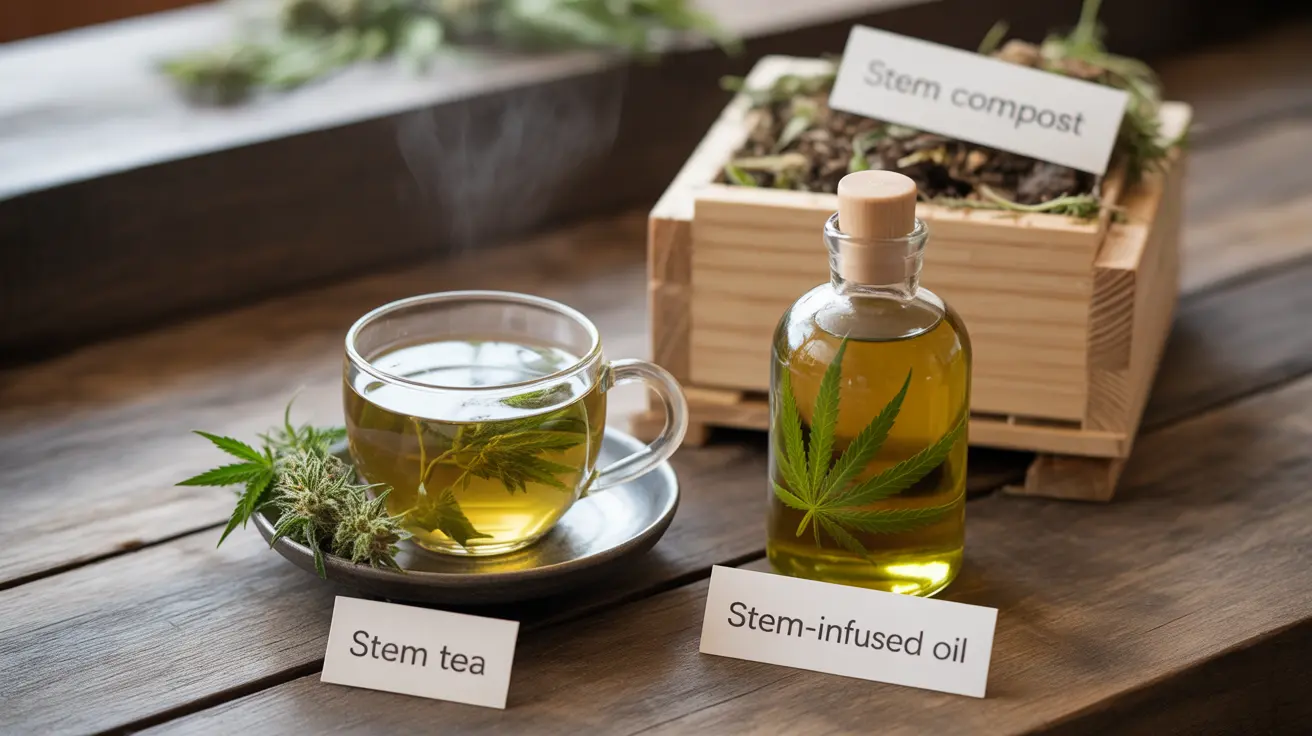Many cannabis users occasionally find themselves wondering what to do with leftover stems from their plant material. While some might consider smoking these woody remnants, it's crucial to understand both the potential risks and more beneficial alternatives for using cannabis stems.
This comprehensive guide explores the safety concerns of smoking cannabis stems and presents smarter ways to utilize these plant parts, helping you make informed decisions about their use.
Understanding Cannabis Stems and Their Composition
Cannabis stems are the woody, fibrous parts of the marijuana plant that provide structural support. Unlike the buds or flowers, stems contain significantly lower concentrations of cannabinoids (THC, CBD, and other active compounds) and are primarily composed of cellulose and other plant fibers.
The chemical composition of stems makes them fundamentally different from the smokable portions of the cannabis plant, leading to distinct considerations for their use and potential risks.
Health Risks of Smoking Cannabis Stems
Smoking cannabis stems can pose several significant health risks:
- Respiratory irritation and inflammation
- Severe coughing and throat discomfort
- Headaches and nausea
- Potential exposure to harmful chemicals from burning plant fibers
- Risk of inhaling small, sharp plant particles
The harsh smoke produced by burning stems contains minimal beneficial compounds while delivering potentially harmful substances to your lungs. This makes smoking stems both ineffective and potentially dangerous.
Better Alternative Uses for Cannabis Stems
Making Cannabis Tea
One of the safer ways to utilize stems is by making tea:
- Decarboxylate the stems first by heating them
- Add to hot water with a fat source (like coconut oil or butter)
- Steep for 15-20 minutes
- Strain carefully before consuming
Creating Topical Applications
Cannabis stems can be used to make topical preparations:
- Infuse stems into carrier oils
- Use in homemade balms or salves
- Combine with other beneficial herbs for enhanced effects
Composting and Garden Use
Stems can benefit your garden:
- Add to compost bins for nutrient-rich soil
- Use as mulch after proper breakdown
- Create natural plant supports
Safe Extraction Methods for Cannabis Stems
If you choose to extract compounds from stems, consider these safer methods:
- Cold water extraction
- Oil-based infusion
- Alcohol-based tinctures
Always ensure proper preparation and careful straining to remove plant material before use.
Frequently Asked Questions
Can you get high from smoking weed stems?
No, smoking cannabis stems is unlikely to produce a significant high due to their extremely low THC content. The minimal cannabinoids present aren't worth the associated health risks of smoking woody plant material.
What are the health risks of smoking cannabis stems?
Smoking cannabis stems can cause severe respiratory irritation, persistent coughing, throat pain, headaches, and potential lung damage from inhaling sharp plant particles and harmful chemicals released during combustion.
Why do weed stems cause coughing and sore throat when smoked?
Cannabis stems cause coughing and throat irritation because they contain high amounts of cellulose and woody fibers that produce harsh, hot smoke when burned. These materials aren't meant to be smoked and can irritate sensitive respiratory tissues.
Are there safer or better uses for leftover cannabis stems besides smoking?
Yes, cannabis stems can be safely used to make tea, topical preparations, or compost. These alternatives are much safer than smoking and may provide better benefits while reducing waste.
How can you extract cannabinoids from weed stems for making edibles or teas?
Cannabinoids can be safely extracted from stems using methods like oil infusion, alcohol-based tinctures, or tea preparation with a fat source. Always decarboxylate the stems first and strain thoroughly before consumption.




